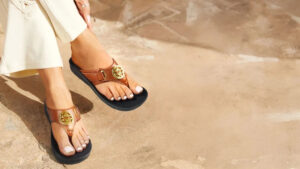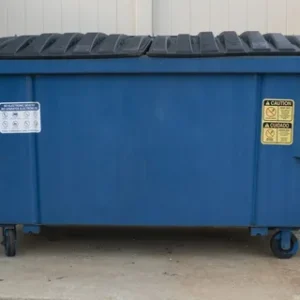
Most people don’t realize how much the weather impacts their footwear comfort. Whether it’s the scorching heat of summer, the damp humidity after rainfall, or the cool breeze of early fall — temperature and moisture changes directly affect how your shoes feel, fit, and perform.
Seasonal transitions can cause your feet to swell, your soles to stiffen, and even your favorite sandals to lose their shape. That’s why choosing the right materials and designs for different climates is key to maintaining both comfort and foot health year-round.
Let’s explore how various weather conditions affect your footwear comfort — and how to make the most of every step, no matter the season.
Summer Heat and Foot Swelling
Hot weather can make your feet expand by up to half a shoe size. This natural swelling is due to increased blood flow and body temperature, which causes tissues to relax. If your sandals or flip flops are too tight, you’ll likely experience chafing, irritation, or blisters.
To stay comfortable in the summer:
- Choose breathable materials like mesh, soft leather, or EVA foam that allow airflow.
- Opt for adjustable straps to loosen or tighten as needed.
- Avoid plastic or rigid soles that trap heat and moisture.
When comfort meets breathability, you’ll notice a huge difference in how your feet feel by the end of the day.
This topic also connects closely to How Weather and Terrain Affect Your Arch Support Needs — a great read if you want to understand how different surfaces and climates influence your arch stability.
Humidity and Moisture Build-Up
Humidity can wreak havoc on your footwear. It makes shoes feel damp and sticky, leading to unpleasant odors and potential bacterial growth. For women who live in humid climates, it’s essential to pick moisture-wicking sandals or quick-drying flip flops to avoid discomfort.
Consider the following:
- Cork and EVA foam resist water and provide cushioning.
- Textile-lined straps reduce friction and prevent sweat build-up.
- Perforated soles allow air circulation to keep feet cool and dry.
For warm, muggy days, the best flip flops for women are those that combine soft padding with breathable, non-absorbent materials. They’re lightweight, supportive, and easy to clean — perfect for beach walks, summer errands, or lounging by the pool.
Cold Temperatures and Stiff Soles
When temperatures drop, materials like rubber or plastic harden, reducing flexibility. This stiffness can lead to discomfort, especially if you’re walking long distances.
To counteract this:
- Look for sandals or slides with flexible soles that move naturally with your foot.
- Choose memory foam or cork footbeds for insulation and adaptability.
- Avoid leaving shoes in cold cars or outdoor spaces where materials can become brittle.
Even in cooler weather, a well-cushioned sole helps maintain blood circulation and prevents stiffness in your feet.
Transitioning Between Seasons
As the weather shifts from one extreme to another, your footwear should adapt too. Many women overlook this transition period, wearing the same pair year-round — which often leads to discomfort or premature shoe wear.
For example:
- During spring, prioritize water-resistant materials to handle unpredictable rain.
- In autumn, use slip-resistant soles for wet leaves and uneven surfaces.
- Always store your summer sandals properly to prevent cracking or fading before next season.
It’s a small effort that makes a big difference in how long your footwear lasts and how good it feels.
Material Matters More Than You Think
The type of material used in your sandals can determine how well they handle heat, moisture, and flexibility. Here’s a quick comparison:
| Material | Best For | Pros | Cons |
|---|---|---|---|
| Leather | Dry, warm climates | Breathable, molds to feet | Can crack in humidity |
| EVA Foam | Humid or beach weather | Lightweight, water-resistant | Less durable over time |
| Cork | All-season use | Shock-absorbing, flexible | Sensitive to water |
| Rubber | Rainy days | Slip-resistant, durable | Can get hot in sunlight |
Choosing the right material ensures your sandals perform well in any condition — keeping your feet cool, dry, and supported.
How to Care for Your Sandals Through the Seasons
Seasonal weather can break down your footwear faster than you think. Sun exposure, humidity, and dirt buildup can weaken straps and soles. Here’s how to extend their lifespan:
- Clean regularly: Wipe sandals with a damp cloth and mild soap.
- Dry properly: Air dry in shade; avoid direct heat sources.
- Store smartly: Keep them in a cool, dry place to prevent mold or hardening.
- Inspect support: Replace when soles flatten or straps loosen.
Caring for your shoes not only keeps them fresh but also ensures consistent comfort across all weather conditions.
The Ideal Flip Flops for Warm Weather Comfort
Not all flip flops are made equal. If you plan on wearing them frequently during warm months, look for arch support, heel cushioning, and shock absorption — not just style.
The best flip flops for women feature ergonomic footbeds that align your posture, minimize arch fatigue, and keep your steps light and balanced. Brands that prioritize orthopedic design ensure that comfort doesn’t come at the expense of fashion.
These flip flops are especially useful for:
- Beach trips and poolside days
- Casual strolls on hot pavements
- Traveling in tropical climates
Their breathable, quick-dry materials make them a smart investment for anyone seeking comfort and style during warm weather adventures.
Step Smart Through Every Season
Your comfort shouldn’t depend on the weather — it should adapt to it. By understanding how temperature, humidity, and material quality affect your footwear, you can make smarter choices that protect your feet year-round.
Whether it’s a humid summer day or a breezy evening walk, your sandals should offer flexibility, breathability, and steady support. That’s where the best flip flops for women come in — combining lightweight comfort with long-lasting performance, no matter the forecast.



